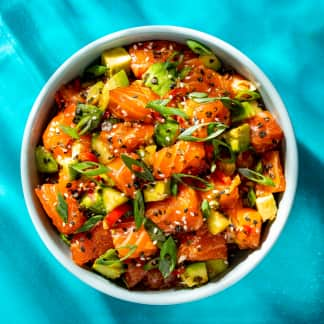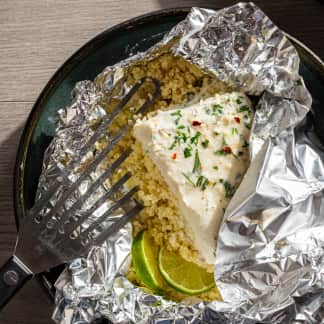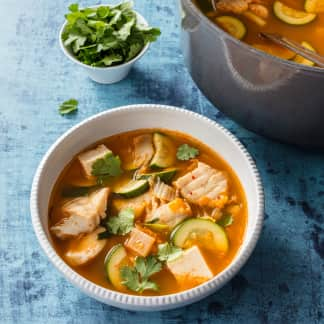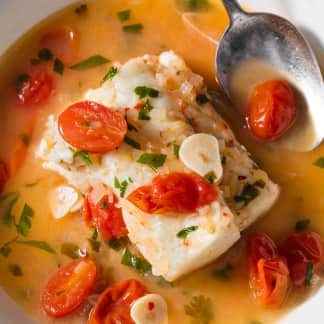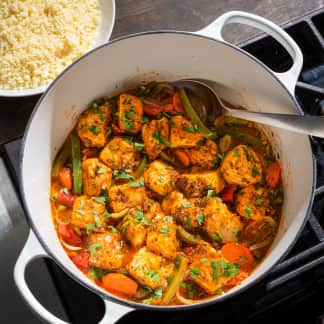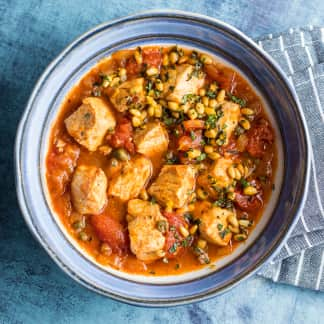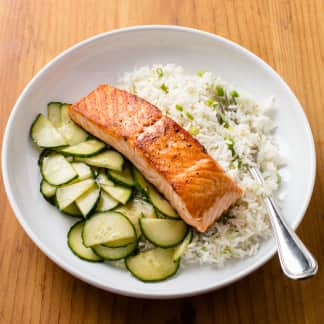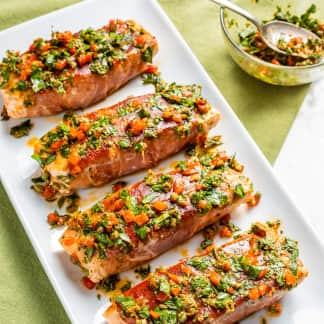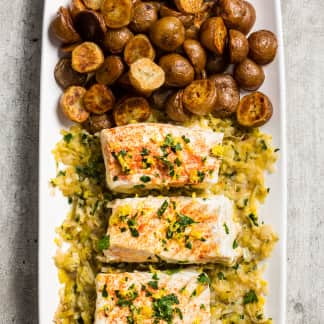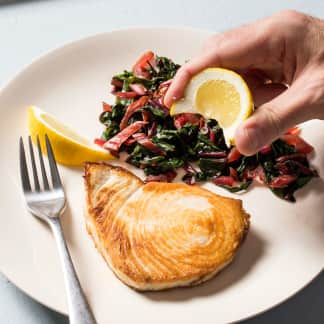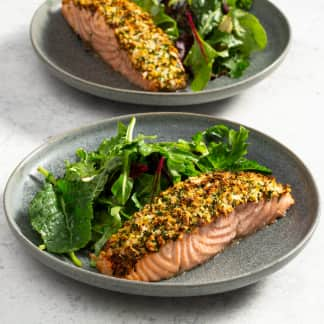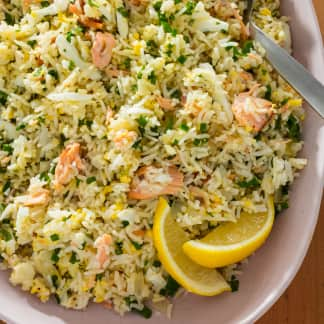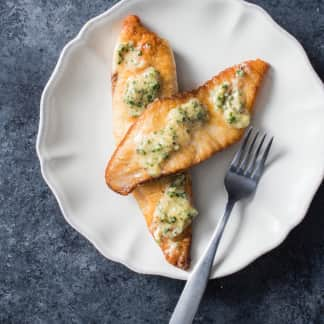My Goals
- Crisp, golden crust
- Moist interior
- Simple, quick weeknight meal

I wanted to take advantage of the intense heat of the skillet to produce a golden-brown, ultracrisp crust on salmon fillets while keeping their interiors moist.
Pan-searing salmon sounds so straightforward that I’ve never given much thought to the technique. Normally, I’d add a little oil to a nonstick skillet, get it good and hot, sprinkle a few skinless fillets on both sides with salt and pepper, slide them into the pan, and cook them on both sides until the fish was cooked through and nicely browned on the exterior but still pink on the inside.
But when I gave this approach a more critical look, I could see that it had two flaws. While the fish had a nice rosy interior at its thickest point, it was a bit overcooked and dry at the thinner end. (Pieces cut from the center of the fillet are our preference for their more uniform thickness, but even these taper on one end.) Secondly, the exteriors of the fillets were more tough than crisp. I wanted to take advantage of the intense heat of the skillet to produce a golden-brown, ultracrisp crust on salmon fillets while keeping their interiors moist.
The solution to the dryness problem was relatively easy: salt. We salt and brine meat all the time, and both techniques apply just as well to fish. Beyond seasoning the flesh, the salt also helps keep it moist. Salting would keep the exterior of the fish drier than brining and thus would seem like the better choice since my goal was crisp, browned crust. But, this being a quick weeknight dinner, I didn’t want to wait 2 hours for the salt to do its job. Brining took about 15 minutes, and as long as I patted the fillets dry with paper towels before cooking, I found that the treatment didn’t significantly inhibit browning.


Pan-searing a salmon fillet initially sounded pretty straightforward, with little room for variation, but the recipes we tested during our initial comparison actually produced a wide range of results.


As for that browning, I decided to focus on getting a really nice sear on only the flesh side since it would be facing up when the fillet was plated. Plus, attempting to brown both sides would just lead to overcooking. Cooking the fish through with the flesh side down the entire time produced a wonderfully crisp crust, but it also left me with an unworkable dilemma: Either the face-up (skinned) side was nearly sushi-raw, or the rest of the fillet overcooked while I waited for the face-up side to cook through. Covering the pan with a lid toward the end helped cook the fish through more evenly, but this trapped moisture, softening the crust.

There was one piece left to tinker with: the heat level. What if I added the fish to a cold pan and then turned on the heat? This would allow the fish to cook through gently as the pan slowly came up to temperature. I’d then flip the fillets over after the skillet was good and hot so they could form a crust and finish cooking through.
I quickly discovered a problem starting with a not-so-hot skillet: No matter how gently I cooked the first side, it tended to dry out and turn tough on the very exterior. When I was skinning the salmon for my next test, I came up with the solution: Leave the skin on. It could serve to protect that first side as it cooked, and I could simply remove it after flipping the fish. Removing the skin at this stage was also a whole lot easier than removing it from the uncooked flesh.


Sure enough, this worked perfectly. Even better, the skin shed enough fat as it cooked that I was able to cook the fish without needing to add a single drop of oil to the pan.
This salmon was excellent with just a squirt of lemon, but a mango-mint salsa and a cilantro-mint chutney were both easy to make, and their bright flavors balanced the salmon’s richness.
Keys to Success
Crisp, golden crust
Starting the fillets skin side down in a cold pan allows the interior to start cooking through gently; then, when the pan is fully hot, we flip the fillets so that a crust can form on the flesh side and the fish can finish cooking through.
Moist interior
Brining the fish helps it retain moisture, while leaving the skin on helps protect it from overcooking.
Simple, quick weeknight meal
We brine for just 15 minutes, keep the whole operation on the stovetop at one heat level, and don’t even need to add oil since the salmon skin sheds enough fat.

Pan-Seared Salmon
For a crisp crust and a juicy interior, the secret is starting your salmon in a cold skillet.
Get the RecipeMore from Cook's Illustrated

Pan-Seared Salmon for Two
For a crisp crust and a juicy interior, the key is doing less, not more.
Get the Recipe


